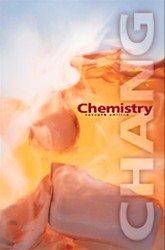 |
1 |  | 
The regions of the atmosphere, in order of increasing distance from the earth's surface, are |
|  | A) | mesosphere, troposphere, stratosphere, thermosphere |
|  | B) | troposphere, stratosphere, mesosphere, thermosphere |
|  | C) | stratosphere, troposphere, thermosphere, mesosphere |
|  | D) | troposphere, stratosphere, thermosphere, mesosphere |
|  | E) | thermosphere, mesosphere, stratosphere, troposphere |
 |
 |
2 |  | 
Which of the following reactions would be an example of nitrogen fixation? |
|  | A) | N2(g) + O2(g) ----> 2 NO(g) |
|  | B) | 2 NO(g) ----> N2(g) + O2(g) |
|  | C) | 2 NH3(g) ----> N2(g) + 3 H2(g) |
|  | D) | 2 NO(g) + O2(g) ----> 2 NO2(g) |
|  | E) | B and D. |
 |
 |
3 |  | 
The Aurora Borealis is due to |
|  | A) | disruptions of the ozone layer. |
|  | B) | relaxation of excited oxygen atoms and ionized N2 molecules. |
|  | C) | the production of NO. |
|  | D) | lightening. |
 |
 |
4 |  | 
Ozone protects us from ultraviolet light by: |
|  | A) | reflecting the light from the ozone layer. |
|  | B) | reacting with oxygen atoms to form O2. |
|  | C) | dissociating into O2 and oxygen atoms. |
|  | D) | None of the above. |
 |
 |
5 |  | 
The depletion of ozone is particularly serious at the earth's poles because |
|  | A) | these cold areas experience little lightning. |
|  | B) | there are more industries in these areas. |
|  | C) | there is little O2 in these regions due to the earth's magnetic fields. |
|  | D) | polar "ice clouds" act as catalysts to convert HCl to Cl2. |
 |
 |
6 |  | 
Volcanoes |
|  | A) | produce about two-thirds of the sulfur in the air. |
|  | B) | are involved in the production of sulfuric acid "aerosols", which persist above the troposphere. |
|  | C) | produce localized areas of lower temperature. |
|  | D) | All of the above. |
|  | E) | None of the above. |
 |
 |
7 |  | 
Which of the following is not a greenhouse gas? |
|  | A) | nitrogen |
|  | B) | nitrous oxide |
|  | C) | CFC's |
|  | D) | methane |
|  | E) | water vapor |
 |
 |
8 |  | 
Which of the following is not a source of CO2? |
|  | A) | fermentation of sugar |
|  | B) | oxidation of carbohydrates |
|  | C) | decomposition of carbonates by heat or acid |
|  | D) | photosynthesis |
 |
 |
9 |  | 
An increase in carbon dioxide concentration causes atmospheric warming because |
|  | A) | the energy trapped by excitation of molecular vibrations is released and some returns to earth. |
|  | B) | the greater vibrational amplitude of the carbon dioxide causes heating of atmospheric oxygen molecules. |
|  | C) | the carbon dioxide molecules dissociate. |
|  | D) | None of the above. |
 |
 |
10 |  | 
Which of the following oxides would not react with water to form an acidic solution? |
|  | A) | SO3 |
|  | B) | CO2 |
|  | C) | BaO |
|  | D) | NO2 |
 |



 2002 McGraw-Hill Higher Education
2002 McGraw-Hill Higher Education

 2002 McGraw-Hill Higher Education
2002 McGraw-Hill Higher Education